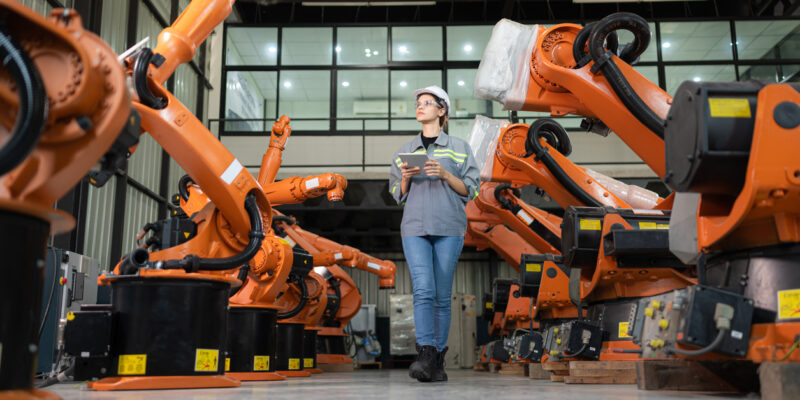
In the realm of manufacturing, the concept of “Smart Factories” has emerged as a beacon of innovation and efficiency. These cutting-edge facilities are redefining industrial production by integrating advanced technologies such as the Internet of Things (IoT), artificial intelligence (AI), automation, and data analytics into their operations. This transformation is not merely a progression; it’s a revolution that promises heightened productivity, reduced costs, and increased efficiency. In this article, we will explore the realm of smart factories, focusing on their key components, advantages, challenges, and the pivotal role they play in shaping the future of manufacturing.
Unpacking Smart Factories
Smart factories, also known as Industry 4.0 or the Fourth Industrial Revolution, epitomize the pinnacle of modern manufacturing. They harness digital technologies to create highly interconnected and automated production environments where machines, systems, and human operators collaborate seamlessly. The defining elements of a smart factory encompass:
- IoT Integration: Smart factories are equipped with an array of sensors and IoT devices. These sensors continuously gather real-time data from machines and equipment, enabling remote monitoring, predictive maintenance, and data-driven decision-making.
- Automation and Robotics: Automation serves as the backbone of smart factories. Robots and autonomous systems are entrusted with repetitive tasks, ensuring precision, speed, and a reduction in errors, ultimately enhancing production efficiency.
- Data Analytics and AI: Advanced analytics and AI algorithms sift through the copious data generated within smart factories. This empowers predictive maintenance, quality control, and the optimization of production processes.
- Connectivity and Communication: Smart factories rely on robust communication networks, including 5G, to facilitate real-time information exchange between machines and systems. This agility enables swift responses to fluctuating conditions and demands.
- Digital Twin Technology: Digital twins, virtual replicas of physical assets or processes, play a vital role in smart factories. They are employed for simulation, testing, and optimization, effectively reducing downtime and operational costs.
The Benefits of Smart Factories
Implementing smart factories reaps a multitude of advantages for manufacturers:
- Heightened Efficiency: Automation and data-driven decision-making bolster production efficiency, curtailing lead times and boosting overall output.
- Elevated Quality Control: Real-time monitoring and AI-driven quality control mechanisms ensure consistent product quality.
- Cost-Efficiency: Predictive maintenance minimizes downtime and lowers maintenance costs, while optimized processes reduce material wastage.
- Flexibility and Adaptability: Smart factories possess the agility to swiftly accommodate market fluctuations and product variations, thereby maintaining a competitive edge.
- Enhanced Safety: Automation of hazardous tasks and real-time safety monitoring elevate worker safety standards.
- Sustainability: Streamlined processes lead to reduced energy consumption and a diminished environmental footprint, aligning with sustainability objectives.
Challenges and Considerations
While the potential benefits of smart factories are immense, manufacturers must navigate certain challenges and considerations:
- Initial Investment: Implementing smart factory technologies necessitates substantial upfront investments in equipment, software, and training.
- Cybersecurity: Increased connectivity exposes smart factories to cybersecurity threats. Robust security measures are essential to safeguard sensitive data and operations.
- Workforce Adaptation: Transitioning to smart factories often requires upskilling the workforce to effectively operate and maintain advanced technologies.
- Data Privacy: Responsible and compliant management of the substantial data generated is crucial.
- Integration Complexity: Integrating legacy systems with new technologies can be intricate and demands meticulous planning.
Conclusion
The emergence of smart factories signifies a transformative shift in manufacturing, promising heightened productivity, improved quality, and enhanced competitiveness. As technology continues to evolve, smart factories will become increasingly accessible and cost-effective, benefiting a broader spectrum of manufacturers. Embracing this Fourth Industrial Revolution is not merely a strategic move; it’s a commitment to future-proofing operations and reimagining the possibilities within manufacturing. Smart factories are not a distant dream; they are a tangible reality that is reshaping the manufacturing landscape today.






